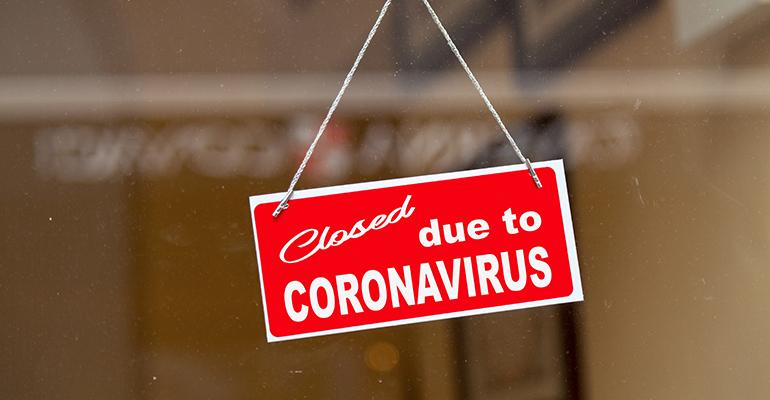As coronavirus numbers begin to rise again in certain regional hotspots like Texas and Florida, the restaurant industry — which is just starting to recover from months of closed dining rooms — will have to reckon with the possibility of another wave of COVID-19. But if states begin to go into complete lockdown again, how can restaurant owners be better prepared this time around?
Disaster planning expert Patrick Hardy gives operators advice on handling the strong possibility of a second wave of the pandemic.
Can you tell me a bit about your background and what you have been working on during the pandemic?
I work with small businesses all over country to prepare for emergencies, and in 2012, I was asked by FEMA to be the first business representative to the United States federal government. Then I left and created an app called Disaster Hawk about a month ago. I decided I want every person in America to have a disaster plan: it should not be hard to do. Only 3% of Americans are prepared for disasters and my entire mission and career is to reverse that to 7% prepared. I also write disaster plans for small businesses.
How likely are we to experience a second wave in the fall?
We should assume it’s going to happen, and in fact, it’s already happening. There are spikes in certain areas of the country because people are starting to have parties and are not following social distancing orders.
 How should restaurants prepare and what are the steps they should take now to avoid being blindsided by a second wave?
How should restaurants prepare and what are the steps they should take now to avoid being blindsided by a second wave?
The first thing a restaurant needs to do is to create a “lessons learned” plan from the first wave, and that’s three different sub-steps: first, conduct a debriefing with all of your staff and ask them two questions: “what did we do well?” and “what do we need to work on?” Those are the lessons that will be important for a second wave. The second sub-step is you have to make an after-action report: a short report that shows you what you need to improve upon this time. The next step is to identify solutions and change your policies. You need to make sure you’re implementing these into your plans.
The second thing you’ll want to do is prepare for if there is a second lockdown: will you close, not close or repurpose your business? There might not be any more PPP loans or EIDLs this time: that tap may be closed for good.
The last thing you’ll want to do is be prepared for a other disasters that might happen during the pandemic. If you are in the Midwest, you might have a tornado. So, how are you going to shelter in place in the basement and socially distance at the same time? Regular disaster preparedness might not make sense for COVID-19.
Should operators bother with relying on or updating their insurance?
Probably not. It’s likely going to be prohibitively expensive to get insurance [coverage for] COVID-19. People think of insurance as their ultimate social safety net but that’s what your disaster plan is supposed to do. Insurance simply can’t solve the problem […] There’s a specific kind of language in these plans that almost always they exclude viruses and you’re seeing the reason why. […] Are statutes going to change? Probably. No one thought about [pandemic insurance coverage] before now. The premiums will definitely go up after this.
What should be a part of a restaurant’s disaster preparedness plan?
A disaster plan should cover the following three steps: evacuation, shelter in place and lockdown. You need to train people on your disaster plan, and all disasters boil down to those three things. COVID-19 is lockdown on steroids where we have to disinfect everything. Be prepared for anything.
How will restaurants survive a second round of this and what should they do differently?
It’s all about repurposing what you’re already doing. You’re an entrepreneur and you want to continue offering a service to the community that they will continue to need, whether you repurpose yourself to only do takeout, or partner with a local hospital. Restaurants don’t have to reinvent the wheel: they just have to be agile and honest with themselves.
If you’re in a state that does not have to lock down completely, what should you do to improve their safety, other than the obvious masks and hand sanitizer?
The best thing they can do is do not write anything in stone. There are no sacred cows: everything can be changed or modified at any time. Maybe you’re using reusable menus, but guests are telling you they’re uncomfortable, so you need to pivot. You have to regularly talk to your guests and staff. Just because you’re wearing masks, doesn’t mean it’s a surgical center. Ask guests how their experience was. Restaurants that maintain their mission of being flexible will be the most successful.





